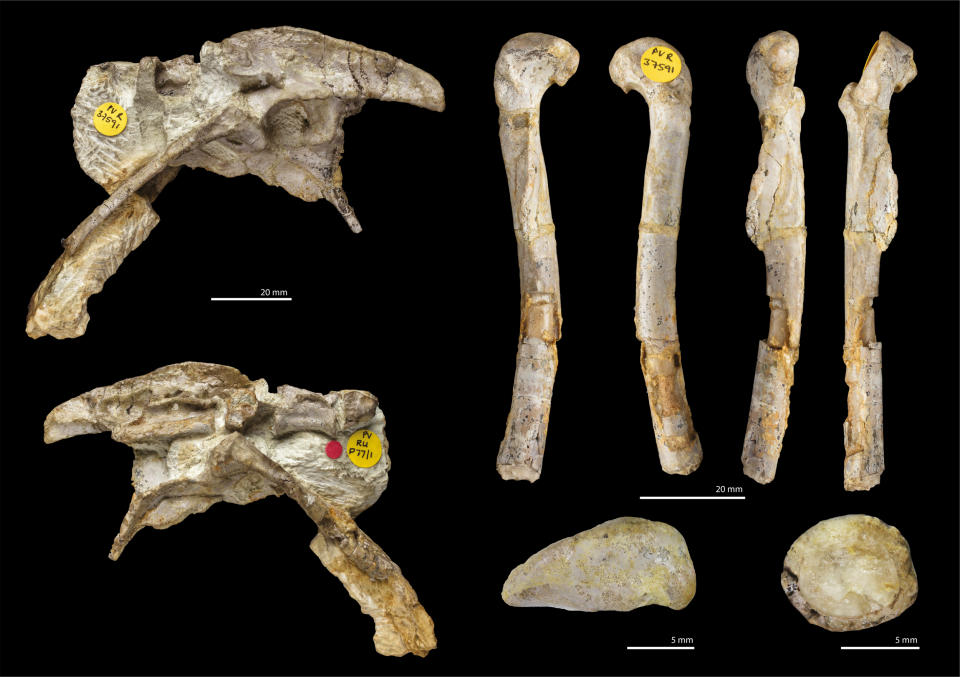Chicken-size relative of T. Rex found in the U.K., scientists say
Scientists have discovered a species that they say is the oldest carnivorous dinosaur found in the U.K. — a chicken-size relative of Tyrannosaurus rex called Pendraig milnerae.
According to an article Wednesday in the journal Royal Society Open Science, Pendraig milnerae is a "new small-sized coelophysoid theropod from the Late Triassic of Wales" that roamed the U.K. over 200 million years ago. Theropods are two-legged carnivores with hollow bones and three-toed feet, including T. Rex.
The fossilized remains of Pendraig milnerae were dug up in the 1950s from a mine in the Welsh town of Pant-y-ffynnon. Pendraig means "chief dragon" in Old Welsh.
At first, scientists mistook the fossils for those of an already-identified dinosaur species then known as Syntarsus, but re-identification of many Syntarsus dinosaurs demanded a new look at the forgotten Welsh fossils, the Natural History Museum in London said in a news release.

"There is no obvious character that set this species apart. It has a certain combination of several characters that are unique amongst its group, which showed to us it was clearly a new species," study author Stephan Spiekman said.
Scientists said they do not know whether the fossils are small because they are from a juvenile or whether they are those of a small adult specimen, in part because of a dwarfism effect observed in the fossils of some island-dwelling creatures.
Pendraig milnerae is named for paleontology expert Angela Milner, a pioneering figure at the Natural History Museum, who died in August.
Milner helped relocate the specimens — long thought lost — which led to the discovery of the species, senior paleontology researcher Susannah Maidment said.
"She found it in a drawer of crocodile material, and she must have had the specimen in her mind's eye from when she had previously looked through it. This paper would not have been possible without her," Maidment said in the museum's statement.

